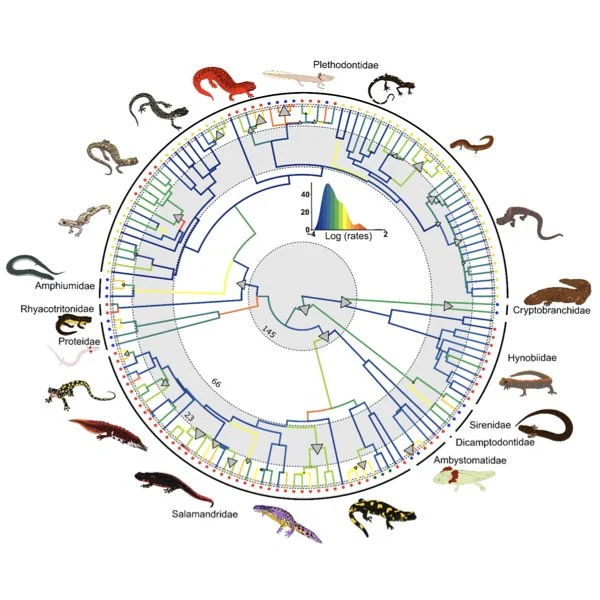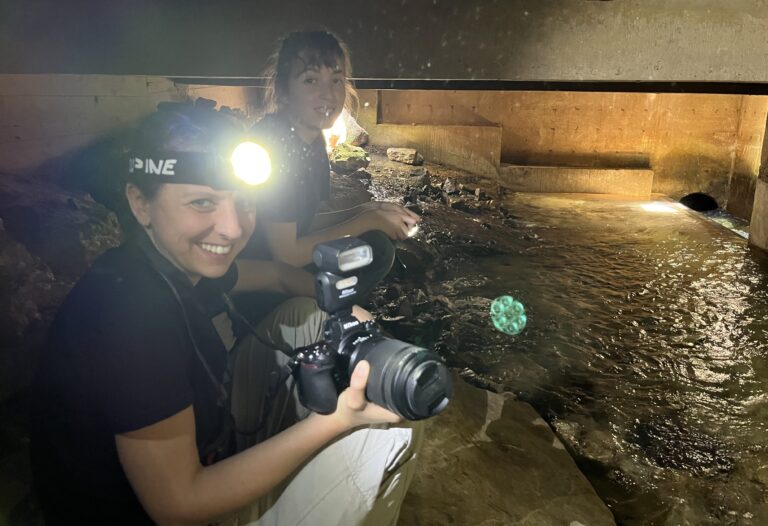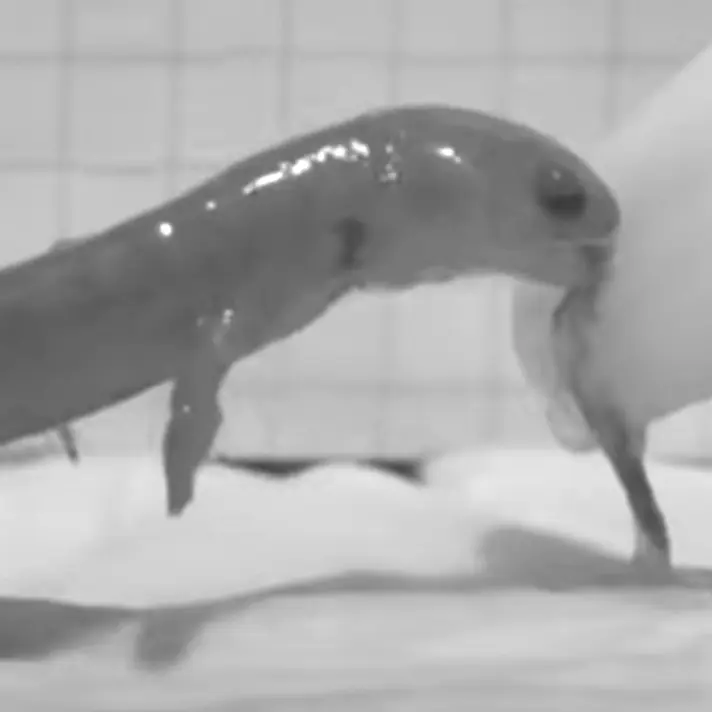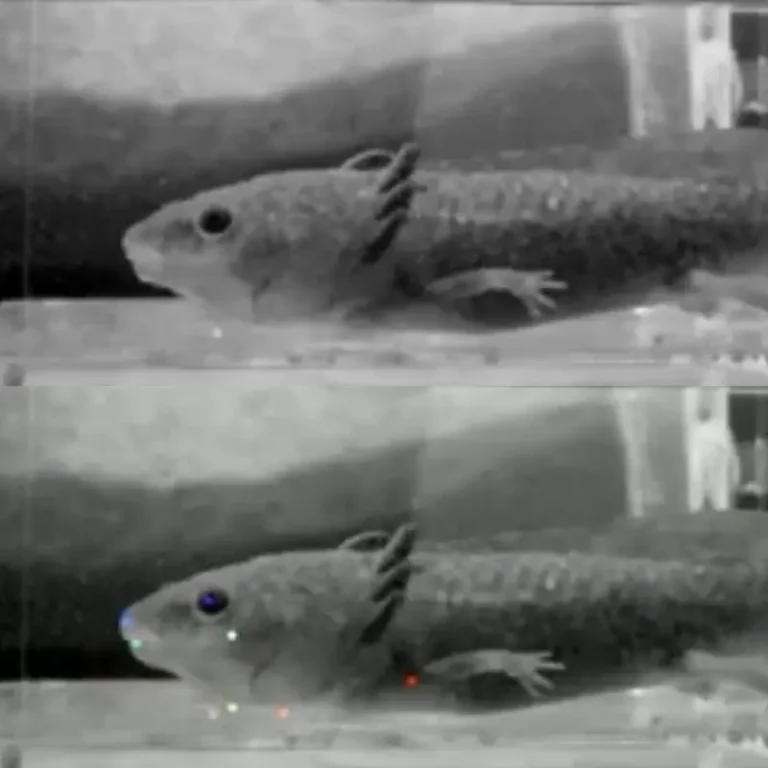
Metamorphosis is widespread across the animal kingdom and induces fundamental changes in the morphology, habitat and resources used by an organism during its lifetime. Metamorphic species are likely to experience more dynamic selective pressures through ontogeny compared with species with single-phase life cycles, which may drive divergent evolutionary dynamics.
In our article out this week in Nature Ecology and Evolution, we reconstruct the cranial evolution of the salamander using geometric morphometric data from 148 species spanning the order’s full phylogenetic, developmental and ecological diversity. We demonstrate that life cycle influences cranial shape diversity and rate of evolution.
Shifts in the rate of cranial evolution are consistently associated with transitions from biphasic to either direct-developing or paedomorphic life cycle strategies. Direct-developers exhibit the slowest rates of evolution and the lowest disparity, and paedomorphic species the highest. Species undergoing complete metamorphosis (biphasic and direct-developing) exhibit greater cranial modularity (evolutionary independence among regions) than do paedomorphic species, which undergo differential metamorphosis. Biphasic and direct-developing species also display elevated disparity relative to the evolutionary rate for bones associated with feeding, whereas this is not the case for paedomorphic species.
Metamorphosis has profoundly influenced salamander cranial evolution, requiring greater autonomy of cranial elements and facilitating the rapid evolution of regions that are remodelled through ontogeny. Rather than compounding functional constraints on variation, metamorphosis seems to have promoted the morphological evolution of salamanders over 180 million years, which may explain the ubiquity of this complex life cycle strategy across disparate organisms.



